Maker spaces and ‘FabLabs’ are popular and accessible in many areas. 3D printers are on the cheap, and powerful laser cutters are in the range of the fearless hobbyist. You can get dirty-cheap PCBs from China in less than a week (ok, probably not right now because of Corona virus) and it is easy to SMD solder parts these days with a DIY SMD PnP machine and OpenPnP. With the right equipment and skill set it is possible to build many cool projects. It is very rewarding and a great learning thing. Blog about it so other can learn too. And it even could get featured on Hackaday.
But: The risk is that someone might send you letter about a ‘Copyright Infringement’. Sadly, this is what happened to me for one of my recent projects. I don’t think that ‘take down’ letter was justified, but I learned a great deal what I should have done differently to avoid that situation. So in the end, it was a learning opportunity, which I believe is worth to share. In essence: what can a maker or educator do?
What this article is about (and what it is not)
To answer the question from the image (“Can a maker build this”): The short answer is: Yes, he can, and as an educator I can do it too. But it is about the ‘how’ and ‘where’.
The long answer is not that simple: Copyright and legal things are complex, and the answer really depends on multiple factors, including possibly to go to court.
💡 Important: I’m NOT a lawyer, and this is NOT a legal advice in any way. But I have received comprehensive legal advice. If you ever get into such a situation, look out for professional help and a lawyer. Keep in mind that for any law there is a territoriality principle: What really counts is the law in your country. And things might be different for you compared to the situation in Switzerland.
This article is about the case a company (or someone else) is accusing you about a ‘copyright infringement’ for a project you did. It is NOT about if someone is using your work without permission, and not about what content you can freely use from the from the web or internet. If this is what you are interested in, I have a short list of links for you:
- Instructables copied by ‘splogs’ (spam blogs): https://www.instructables.com/community/A-few-thoughts-about-copyright-and-Instructables/
- Making Personal Copies: https://info.legalzoom.com/copyright-law-making-personal-copies-22200.html
And this article is about the topic of ‘copyright’ (with the extension to ‘design’). It is *not* about patents which yet is another (even more complex) thing.
Background
So here is the story behind this: when I saw this installation at the Singapore airport, I was intrigued about that idea and concept. It was a perfect example for the ‘Advanced Distributed Systems’ lecture and lab at the Lucerne University: obviously a larger distributed system which can be implemented with small stepper motors and microcontrollers on a bus system. Not that hard and difficult to build, good for a ‘distributed system’ lecture. Students would be tasked to build such a system, get it interconnected and synchronized.
To check the concept and to prepare the lab material, I started developing a PCB, electronics and software. I published a blog article about the build, to document it and to give everyone credit, including the company which installed that thing in the airport of Singapore. I did make it clear that I won’t sell anything, but I made the PCB data available but without the Gerber files, so others could start learning. For everyone else, I pointed to the company web store. My article got picked up by Hackaday:
Within a week I received a letter from HS1982 (the company who did that airport installation). It was not a physical letter: a note received through LinkedIn, the most important part quoted below:
“… Humans since 1982 has made substantial investments in to the protection of its intellectual property rights.
It has now come to our attention that you have been constructing a very similar version of Humans Since 1982’s well-known and copyright protected art installation ”ClockClock 24” and posted this on your blog https://mcuoneclipse.com/2019/12/29/diy-meta-clock-with-24-analog-clocks/ and now also for sale as seen on PCB-way: https://www.pcbway.com/project/shareproject/_Meta_Clock__Board_V1_0.html. It is impressive to see how far you have come with your project but Humans Since 1982 is of the firm opinion that the use of an almost identical design is detrimental to the copyright protected works and products owned by the company. In accordance with international agreements, copyright is established simultaneously with the creation of the work. For this reason, there is no registration excerpt from any authority or institution. However, please visit our website for information about when the work was first displayed to the public (being 2015) https://www.humanssince1982.com/clockclock24 and for examples of where it has been exhibited. Furthermore, we have design registrations within the EU, see enclosed registration certificates. We are sure you understand the concerns of Humans Since 1982 and are willing to remove the designs on any and all channels it may be posted, and not post on any other platforms in future, in order to avoid risk of confusion as to the rights and origin. We wish for a friendly settlement of this matter, but if you do not agree to take them down, we will be forced to file for a copyright infringement request to the platforms in question and ask them to take it down. Please confirm in writing to us that you have taken them down at your earliest convenience, but not later than January 10, 2020. …”
That letter came with three registered designs at EU IPO:
- https://euipo.europa.eu/eSearch/#details/designs/002385625-0002
- https://euipo.europa.eu/eSearch/#details/designs/002385625-0004
- https://euipo.europa.eu/eSearch/#details/designs/002385625-0005
I tried to explain that I was not selling anything. It seemed to me that person did not really understand what a PCB is. I thought that their concern was about the images of the clocks (‘their design’ which was mentioned several times). So I had removed pictures of the clock (‘the design’), not to raise any concern. Then I removed the PCBs on which they do not have any rights. But it continued that way, pressing more and more to have the whole article removed.
In retrospect: I admired HS1982 and was a huge fan. I gave them credit for the great idea. But someone decided to turn that into a big disappointment. Ultimately I did not want to make the effort to call the court to have the final say, so I have removed the article content to settle it.
The good news is that I have learned through my legal contact that things could be much worse and really ugly. But I was really wondering about the following I have received in that LinkedIn conversation:
“Human since 1982 has the copyright to works displaying digital time using a grid arrangement of analog clocks, for instance “The ClockClock 24” (“CC24”).”
Wow! Could that be true? Really?
Copyright
The law and legal situation in some countries can be really challenging. In the US there is the DMCA (Digital Millennium Copyright Act, see for example a discussion in https://www.eff.org/files/2014/09/16/unintendedconsequences2014.pdf). Many such laws target the music, streaming media or e-book industries for good and bad reasons. Most countries and the law handle software in a special way too. It does not handle ‘electronics’ in a special way. And the concern is that someone makes a copy of something and makes a business out of it.
💡 On DMCA I have found the case of the Sony Aibo, where a hobbyist has extended the Aibo robot with custom dance moves (https://makezine.com/2011/02/24/sonys-war-on-makers-hackers-and-innovators/). In the Aibo case the reaction of the community caused Sony to step back.
To get a good and useful overview about copyright for makers: check out the following video about “Copyright Law for Visual Artists & Makers”. It very likely applies to your country too, but there might be some differences.
The key point: there is no copyright on ideas or concepts. If you use different material or arrange things in different ways and if it is ‘different’, things should be fine. It gets tricky if it gets ‘close’ to the original. The question is what ‘close’ means. As bad as it is, that answer can be answered only by the court. For sure it is a problem if it is a ‘exact copy’ or ‘digital twin’.
I don’t think my work would fall into such a category, but HS1982 claims an “almost identical design”. What that really means would be debatable or up to the court. But maybe they were surprised that technically it is not difficult to build it and that even students do it? Of course they still want to sell their clocks (priced at $7000 or higher), and the concern was that someone could pick it up build a flood of cheap clones (which would not be possible because I did not disclose the necessary details)? It would be a valid concern if I would have made it available for sale or provided a kit (which was not the case), even not the software.
Case: Video Games
Copyright can be complicated thing, and so is software. Maker projects usually include software, e.g. running on a microcontroller. For software usually there are special laws. It is interesting to see how copyright is handled in the gaming industry, especially because there are cases where the court has decided:
- Video game cloning, both for hardware and software: https://en.wikipedia.org/wiki/Video_game_clone
- Game copies and Clones: https://www.gamasutra.com/view/feature/187385/clone_wars_the_five_most_.php
- Clone or copy: https://www.taylorwessing.com/download/article_gaming_copyright.html
- Illustrated cases: http://pnwstartuplawyer.com/copyright/software/copyright-illustrated-video-game-clones/
- Good collection of cases: https://www.copyrightuser.org/educate/the-game-is-on/episode-5-case-file-32/
The conclusion is that a ‘digital twin’ which copies too much of the original work might be a copyright infringement. For example, Mino (right) lost against Tetris (left):
The idea ‘falling bricks piling up and eventually if the line is full disappears’ is not protected. But Mino copied too much of the shapes and colors and even the size of the gameplay. If Mino would have used a different arrangement/grid/shapes, the case would have ended differently.
Is that clock on display in https://hackaday.com/2020/01/01/building-a-giant-meta-clock-made-of-smaller-clocks/ in a digital twin of https://clockclock.com/? It uses the same number of clocks, and how clocks can be arranged is a technical consequence (which cannot be protected). Maybe I just should have added one more row of clocks and painted everything in green to make it more different? But size and color is not deemed as a difference large enough. In retrospect: I should have used a 4×8 or 6×6 arrangement.
Secondly, the vague concept of ‘look & feel’ or ‘general gameplay’ is not protected. How the clocks are moving the hands would probably into that category What can be protected is a ‘design’ after registration (depends on the country).
Case: Word Clock
How a ‘design’ or a ‘design protection’ means can be illustrated by the ‘World Clock’ case. The company Qlocktwo produces a beautiful ‘Word Clock’:
In Germany you can have a ‘Registered Design’ (or ‘Geschmacksmuster‘). It basically describes the lines, colors and form of a design, usually with pictures of it. It must be registered in the DPMA data base. Below are three designs registered by Qlocktwo:
- https://register.dpma.de/DPMAregister/gsm/register?DNR=402009000849-0001
- https://register.dpma.de/DPMAregister/gsm/register?DNR=402009000849-0002
- https://register.dpma.de/DPMAregister/gsm/register?DNR=402009000849-0003
The company registered the design in 2009, and has aggressively sued anyone doing something similar (“Abmahnung“). It affected in Germany 3rd parties e.g. providing laser cutting services, e.g. see the note in https://laserteileonline.de/wortuhren.
Qlocktwo was *not* the first having the idea, but seems to be the only one who registered the design. Unlike for patents, the registration authority does not check if there is an earlier design of it. The earliest trace of the idea (showing time with words) I was able to find is from 1998 (http://www.kult-uhr.com/geschichte/index.htm). There is a good discussion (German) on https://www.mikrocontroller.net/topic/463510 on the subject too. And obviously lawyers can make money with sending “cease and desist” letters too.
The conclusion is that the idea of building a clock with words is not protected, but the exact design (color, font, material) of that clock front plate(s) can be. But it needs to be registered in each country (similar to patents). I could build or sell a word clock, as long the look (or design) is not the same or close ‘enough’ what Qlocktwo has registered.
Other Clock Work
As for my ‘clock’, here are some other projects of it for reference:
- ‘A million Times 120 clone’ by Cornelius Franz, 2019, work in progress, using X40 stepper motors and X27 stepper drivers with an STM32, clocks connected with CAN: https://hackaday.io/project/21433-a-million-times-120-clone. Originally they aimed to provide a kit. The prototype below uses a 2×4 arrangement, which is not identical to the HS1982 arrangement (e.g. 3×8). Probably not a concern to HS1982 because it is 2×4 only.
- ‘My own “a million times clock-clock”‘ by ‘ChaterRony‘, 2018-2019, work in progress, VID28 motors directly driven by an Atmega, using an ESP32 as master, clocks connected with I2C: https://hackaday.io/project/162543-my-own-a-million-times-clock-clock. Probably not a concern for HS1982 because very early in development.
- Working Replica by Wojtek Kosak Główczewski, 2019. using VID28 motors, each clock is controlled by an Atmega328 driving the motors directly, connected by I2C, 3D printed enclosure: https://hackaday.io/project/163582-digital-clock-made-of-analog-clocks. Comments in the project seems to indicate that the author has received a letter from HS1982 too.
- BCD-Uhr by DieterZech, X40 motors with 2 EasyDriver and STM32Nano for each clock: http://www.dize.de/bcd/.No further information is available on that project.

bcd-uhr (Source: http://www.dize.de/bcd)
- Excellent overview of projects by Dror Gluska, 2019: He describes his own research and created a modular PCB: http://uhurumkate.blogspot.com/2019/03/a-million-times.html.
I did not find much more information on the web. It could be that others had to remove their content too.
Settlement
While it is helpful be aware of other projects, it won’t help much in the case where you are accused of a copyright infringement. But could they could helpful if you want to call the court to decide. Ultimately, only a court can make the decision. My thinking was that a settlement probably would be the best way, unless you are really (really) willing to spend the time and money.
If you ever get such a letter: immediately reach out for legal advice with someone specialized in copyright law. As a starter, the WIPO has a short guideline (https://www.wipo.int/sme/en/documents/copyright_infringement_fulltext.html). Don’t wait. Respond to the letter as soon as possible. The letter for sure will have some short deadlines in it, probably only a few days (normal legal practice would 10-14 days, but they want to press on it). The letter might offer ‘to answer any question’. Be prepared that your questions won’t really get answered. Document everything and every step carefully: if it ends in front of a court, it is invaluable. Be cooperative and try to seek to settle the case outside the court. Ignoring or missing reasonable deadlines is not a good thing. Not trying to settle the case in good faith will be used against you if it ever ends in front of the court. Do not expect that the other side is wants to listen, or that you can explain things (non-commercial, …). The only thing is the initial claim and request (e.g. to cease and desist).
Even if it is very frustrating: cheer you up with the fact that things could be even worse.
Copyright, Design, the Law and How to Avoid Copyright Infringement Letters
So, such a thing is for sure is not pleasant. So how even not get into such a situation? Afterwards things are always more obvious, so I want to share my thoughts here (again: this is NOT a legal advice!). Keep in mind that the law is different for each country and region too, so check with a lawyer you trust.
- If someone has or might have a copyright, ask for permission. This link might give some guidance. The catch is that the one you ask might not own the copyright won’t help at the end.
- For a ‘registered design’ or ‘design’, it needs to be registered for your region or country. HS1982 had their design registered in the EU, but this does not apply to Switzerland or has to be registered separately. So the HS1982 ‘design claim’ would not apply for Switzerland. The designs which were registered in the EU (e.g. https://euipo.europa.eu/eSearch/#details/designs/002385625-0004) did not include that ClockClock24 in question and is rather different. I think HS1982 realized that during the process and changed from a ‘Design’ case to the more general concept of ‘Copyright’.
- ‘Copyright’ is universal. It is established by the fact of creation or publication. For example I own the copyright on this article and on the images I have created for my blog. I can use images and other things from someone else as long it is ‘fair use’.
- It is possible to use copyrighted material without prior permission, e.g. called ‘fair use’ in the USA and other areas (see for example https://fairuse.stanford.edu/overview/fair-use/four-factors/).
- The copyright law usually includes exceptions to copyright, usually for private or educational usage.
In Switzerland, the Federal Law “231.1 Bundesgesetz über das Urheberrecht und verwandte Schutzrechte” applies. The ‘fair use’ equivalent is covered by Art. 19:
(note that this is an English translation, and has no legal binding (I’m getting lawyerish 😉 ):
Chapter 5 Exceptions to Copyright
Art. 19 Private use
1 Published works may be used for private use. Private use means:
- a.
- any personal use of a work or use within a circle of persons closely connected to each other, such as relatives or friends;
- b.
- any use of a work by a teacher and his class for educational purposes;
- c.
- the copying of a work in enterprises, public administrations, institutions, commissions and similar bodies for internal information or documentation.
2 Persons entitled to make copies of a work for private use may also have them made by third parties subject to paragraph 3; libraries, other public institutions and businesses that make copying apparatus available to their users are also deemed third parties within the meaning of this paragraph.1
3 The following are not permitted outside the private sphere defined in paragraph 1 letter a:2
- a.
- the complete or substantial copying of a work obtainable commercially;
- b.
- the copying of works of art;
- c.
- the copying of musical scores;
- d.
- the fixation of recitations, performances or presentations of a work on blank media.
So what does this mean?
- §19.1.a: It means that I can build as many CC24 for myself and my family and friends, without the need for permission, as many as I want, as long as it remains there.
- §19.1.b: I can use and build it in my classes and use it for educational usage. I can teach my students how it works and can use it the classroom and build it. I can even make identical copies of what HS1982 sells for educational purposes.
- §19.1.c: I can use document it and keep it inside the institution.
- §19.2: I can use 3rd parties (e.g. a laser cutting company or PCBWay to produce parts of the work).
The key is for private and own use, or for education. The catch might be §19.3: With the publication of the blog article it somehow ‘escapes’ the ‘private’ domain, so could this be a problem? Possibly.
- First: I’m allowed to write about it (‘freedom of speech’), as long it does within the legal boundaries (e.g. anti-racism law)
- §19.3a does not apply as the blog article itself cannot be considered as ‘complete’. In its best, it is a incomplete instructable and not ‘complete’. The court would have to decide if pictures of a hacked build with bare PCBs (no Gerbers were published) and without any software would apply as ‘substantial’? I doubt so.
- Same as for §19.3b, where §19.3c and §19.4c are not applicable.
Making a picture or a description of something built privately does not make it a public copy itself, because it does not get ‘reproduced’ or ‘produced’ publicly. It does not create a physical or intended manifestation. It would be different if I would play or stream a copyrighted song: this would violate the copyright as that way the ‘work’ gets copied and produced.
In summary: HS1982 has a copyright on their clocks as shown on their web page (color, lines, materials), so I cannot produce, sell or give away it for the public. For private and educational use I can make copies, and I can write about and publish about it as long it does not get reproduced or copied in a substantial way. HS1982 has no copyright on the idea displaying something interesting or the time with clocks or stepper motors, nor they have any copyright on PCBs or software which is able to control one or more clocks. All what they have is a registered design (in some countries) which would prevent producing or selling a very similar clock outside the private or educational domain.
Could I sell a kit? No, because I think this would be considered ‘substantial’. Can I make a clock, possibly with multiple clocks and sell it or provide it as a kit? Yes, as long it is not getting close or similar in design. HS1982 only owns a copyright on that clock and the very specific registered design, not on all clocks of the world.
Finally: get inspired by ideas. As long as it is personal or educational (check the law first!), you should be ok. And be prepared that lawyers might not know the law ;-).
Summary
An idea is not protectable and is free for the public. Anyone can use an idea. Only a design (if registered) is protected. Copyright applies to any work created, but it can be used for private and educational use without asking for permission, but you have to check your local law.
With publishing a project or even an incomplete instructions there is the risk that a lawyer might jump on you. But there are examples how makers can be handled differently, see https://hackaday.com/2020/01/18/diy-lambo-that-made-the-real-lamborghini-take-notice/:
But this is probably something outside the scope of Law schools?
Happy Making 🙂
Links
- Hackaday article: https://hackaday.com/2020/01/01/building-a-giant-meta-clock-made-of-smaller-clocks/
- Original article (content taken down): https://mcuoneclipse.com/2019/12/29/diy-meta-clock-with-24-analog-clocks/
- This article on Hackaday: https://hackaday.com/2020/07/31/patent-law-and-the-legality-of-making-something-similar
- Schweizerisches Urheberrecht: https://www.admin.ch/opc/de/classified-compilation/19920251/index.html
- Copyright basics: https://www.ige.ch/en/protecting-your-ip/copyright.html
- Copyright in general (in German): https://www.ige.ch/fileadmin/user_upload/schuetzen/urheberrecht/d/Urheberrecht-und-verwandte-Schutzrechte.pdf
- Das Urheberrecht im Kontext von Unterricht und Lehre (German): http://www.diceproject.ch/wp-content/uploads/2011/05/Handbook_web_de.pdf
- WIPO: https://www.wipo.int/sme/en/documents/copyright_infringement_fulltext.html
- First Aid (German): https://gewerblicherrechtsschutz.pro/fileadmin/Ebooks/Die-erste-Hilfe-Taschenfibel_03_2018.pdf

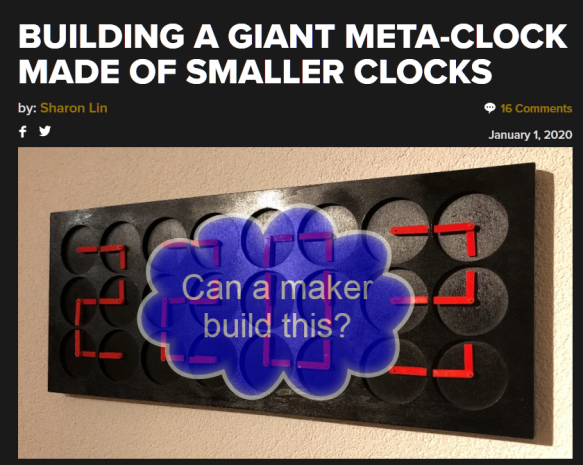


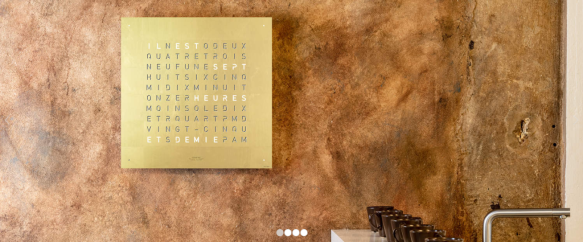

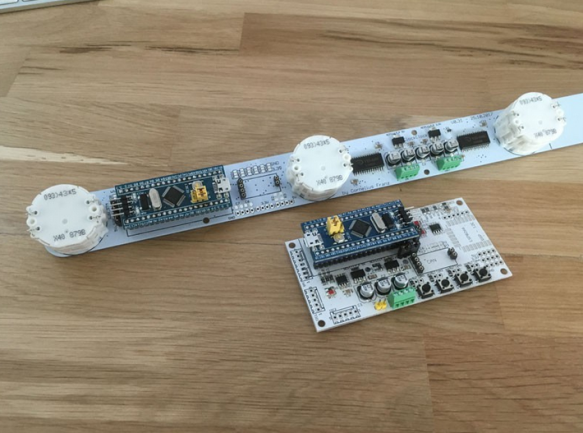
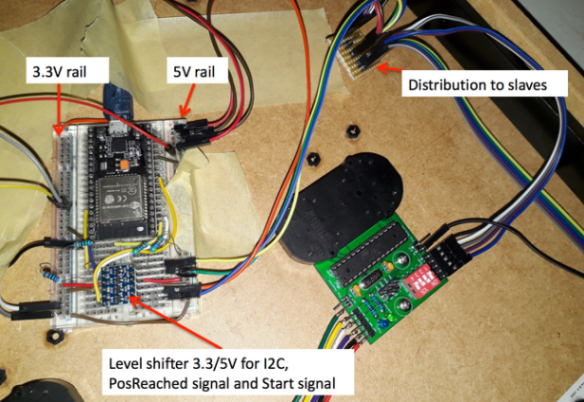
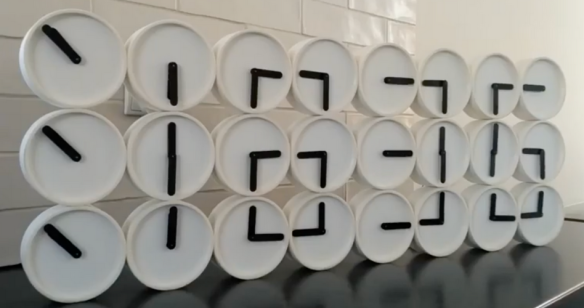

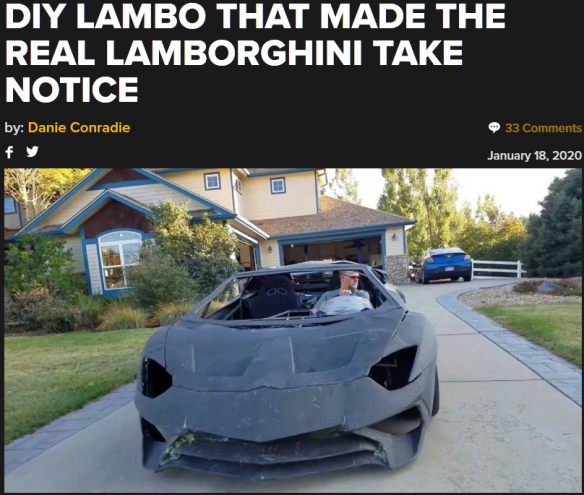
Sorry to hear all of that… and you finished your post with a happy making! Good on you Erich!
LikeLiked by 1 person
Yes, I wanted to have positive outcome on this.
LikeLike
A summary very instructive!
Thanks a lot Erich
LikeLiked by 1 person
Thanks for Sharing your Experience Eric. I am sure it will help other. !!!! Keep Blogging. !!
LikeLiked by 1 person
Thank you!
LikeLike
Pingback: Behind the Canvas: Making of “60 Billion Lights” | MCU on Eclipse
Pingback: DIY ‘Meta Clock’ with 24 Analog Clocks | MCU on Eclipse